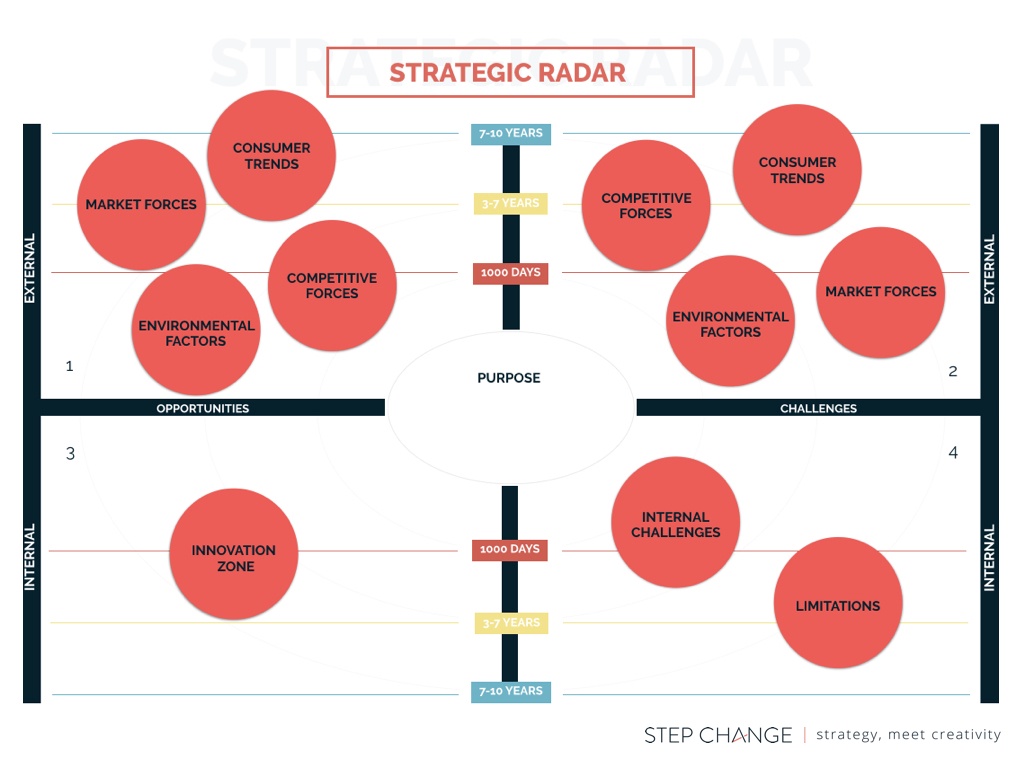We see this happen in businesses: The senior team would go away for a two-day offsite retreat to develop a strategic plan. And when all is said and done, they would come back with a plan or a goal devoid of strategy.
Many times senior leaders find themselves just documenting goals or plans or business-as-usual instead of doing actual strategy.
Without a strategic plan, you have no direction or focus and may find yourself stuck with the status quo — with no clear mark for growth.
Strategy streamlines your business and ensures all your resources are allocated appropriately, with everyone in your organisation working towards the same goal.
So how do you know if you’re on the right track? What guiding context can you measure your strategy to? Here are a few places you can look into to know if you’re doing strategy or something else entirely.
Do you fully understand the language of strategy?
Contrary to what many might think, you can’t do strategy in a day or two. As the context by which your organisation’s purpose changes, your strategy needs to change with it too.
Strategy is ever changing, ever evolving. You are either strategic or not according to the fluency by which you and your team discuss current issues and respond to opportunities.
To better understand the language of strategy, it helps to recognise and define important terms used in strategic conversations.
Purpose
No strategy makes sense without a clear definition of your organisation’s purpose. An organisation without a strategic plan, is like a ship without a rudder. It is difficult to go anywhere when you have no means to measure and monitor success in the first place.
Why are you here? What and who do you aspire to be? Purpose drives your strategy and measures your success in the long-term. It should be well-defined and clearly understood by your shareholders, management, staff, clients or partners.
Ambition
Once you’ve identified what it is all for, your ambition is the guiding lens that helps keep you on track to make sure you’ve achieved your purpose.
Opportunities & Challenges
Your strategy needs context and your organisation’s opportunities and challenges arise out of it. As you move forward in your quest to fulfill your purpose, you’ll meet several opportunities and challenges that help you get closer to your goal.
Objectives
Your objectives serve as your organisation’s milestones and should be aligned with your purpose. They should be specific and measurable so you’ll know that achieving these individual milestones will get you a step closer to achieving your purpose.
Strategy
Strategy should answer the ‘How’ in achieving your objectives. It comes up as a result of the choices your organisation makes to realign your resources — no matter how small or limited — so you can leverage it to achieve the best results.
Tactics
Tactics refers to how you plan to implement your strategy. It is a series of actions that helps bring your strategy to life.
If you’re still using a SWOT, you should be nervous…
In one of our widely read articles at the Step Change Blog, I talked about the need to put an end to the SWOT analysis tool.
Over the years, organisations have gotten so used to the SWOT tool that they think of it more as a template to be filled out at the end of the year rather than really striving to understand the context behind it.
The SWOT doesn’t always have the most updated facts or serve the most accurate data. It isn’t time-bound and therefore doesn’t always serve to address the right context by which the organisation stands.
When context changes, the strategy needs to change as well. But the SWOT tool simply does not have the capability to look at the relationship between your business and its context. It doesn’t address the time-critical nature of opportunities and challenges.
As Richard Rumelt, author of the best-selling book Good Strategy/Bad Strategy, points out in his article,
A strategy is a way through a difficulty, an approach to overcoming an obstacle, a response to a challenge. If the challenge is not defined, it is difficult or impossible to assess the quality of the strategy.
So at Step Change, we use the strategic radar instead of the SWOT tool to help our clients unlock growth opportunities.

You can learn more about the strategic radar and why we believe it's very effective for strategic planning in this article: “The Death of the SWOT Analysis and the Rise of the Strategic Radar”.
If you can’t answer these direct questions, you don’t have a strategy
To get you started in the right track, we’ve rounded up the top 8 questions you need to answer about strategy.
- What business are we in/should we be in?
- Where do we compete?
- Who are our ideal target customers?
- What unique value do we bring?
- What’s the expression of that value?
- What resources and capabilities do we utilise?
- How do we sustain that unique value?
- How and where will we add value?
You can learn more about this checklist here.
While it may seem demanding to reexamine your long-term strategy, doing so at the start of the year may be just what you need to set the foundation for growth, reengage your team, boost productivity, and give rise to new opportunities while ensuring business continuity for succeeding years.
Now that you’ve gone through our checklist, it is high time to ask yourself, are you really doing strategy?
Editor’s note: This article was originally published in 16 January 2018 and was updated for freshness and relevance.
Photo credit: ilbusca / Getty Images
















